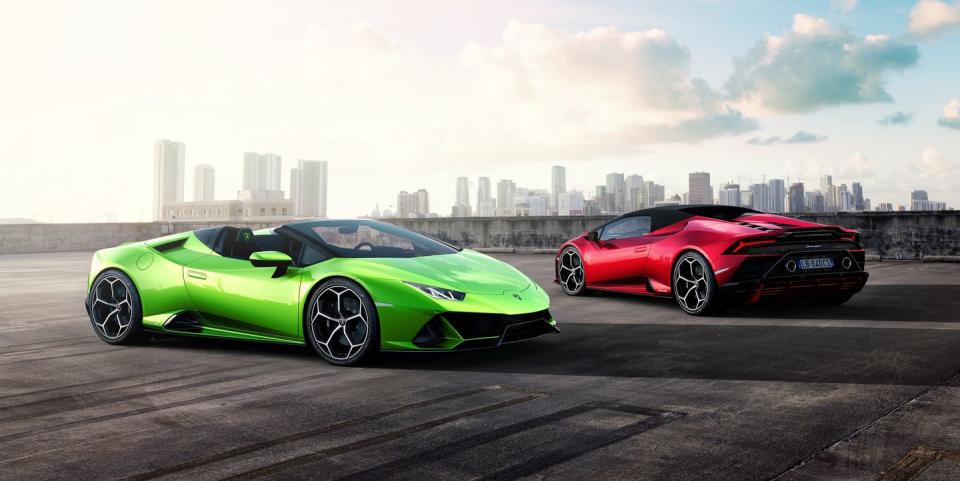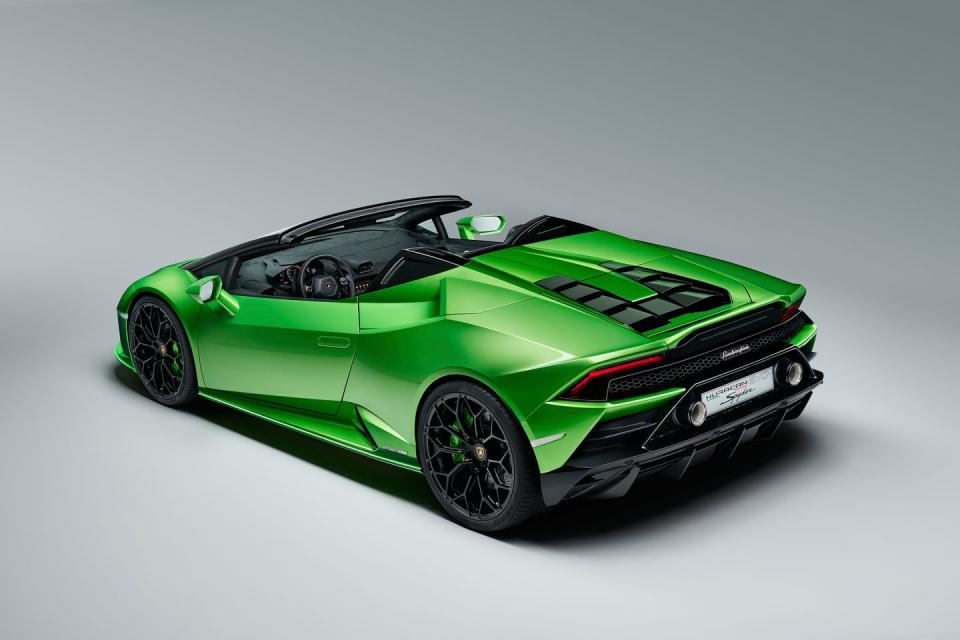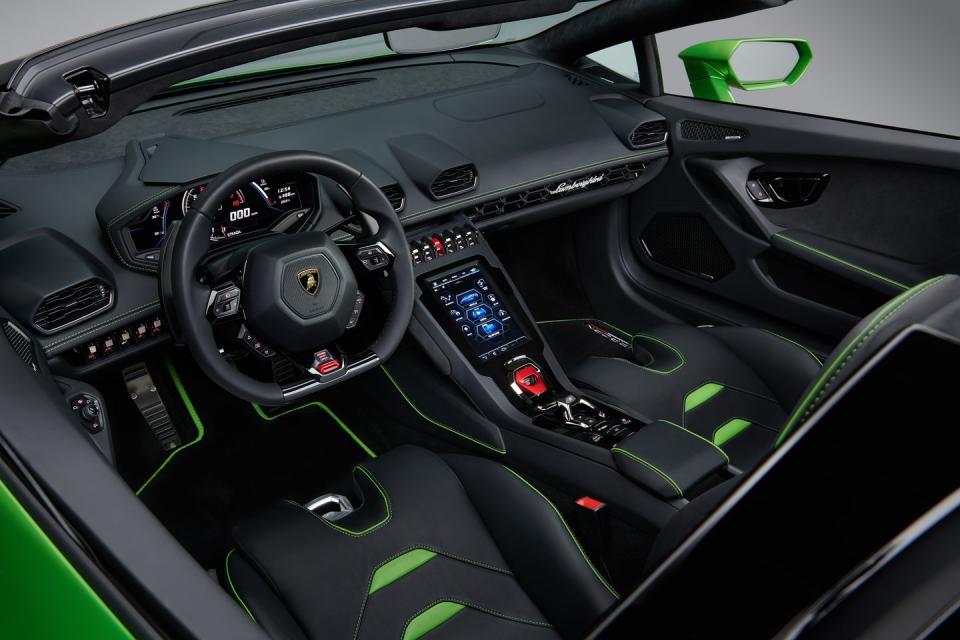Lamborghini Huracán Evo Spyder Offers Open-Air Fun and 202 MPH

Lamborghini will introduce this topless version of its Huracán Evo coupe at the Geneva auto show in early March.
The new model is claimed to feature five times the downforce and aerodynamic efficiency of the previous Huracán Spyder.
With a 5.5-liter V-10 engine derived from the Huracán Performante, it provides a claimed 3.1-second zero-to-60-mph time and a top speed of 202 mph.
Lamborghini has a well-documented history of wringing numerous variants out of every model it makes. So, when the comprehensively refreshed and more powerful 2019 Huracán debuted with the Evo moniker as a permanent addition to its name, we collectively mused, "I wonder when the Spyder version will hit?" That time is now, and the 2020 Lamborghini Huracán Evo Spyder is here to flip the wigs of anyone who gets behind the wheel.
Like the Huracán Evo coupe, the Huracán Evo Spyder borrows its 5.2-liter naturally aspirated V-10 engine from the Performante versions of the Huracán. Rated at 631 horsepower at 8000 rpm and 442 lb-ft of torque at 6500 rpm, it's a multi-alloy, rotating mass of a love letter to the waning days of engines that inhale without assistance.

Lamborghini is claiming a zero-to-6o-mph time of 3.1 seconds and a top speed of 202 mph; while we're confident we'll be able to shave a tenth or two from that zero-to-60 time, it'll take a poised driver to confirm the 202-mph top speed-not that we have any reason to doubt it. To optimize that capability, Lamborghini made sure its next-generation vehicle dynamic and aerodynamics also made the leap to the Evo Spyder.
The Evo Spyder, like its coupe counterpart, gets a new bumper, splitter, and enlarged air intakes for a claimed increase in aerodynamic efficiency. The new rear design, complete with a high-mounted rear sport exhaust and an integrated spoiler, and the underbody shaping are also borrowed from the coupe. The side view differs slightly, in that the soft top deviates slightly from the coupe's profile when up; it is hidden when the top is down to emphasize the Spyder's open-air nature. According to Lamborghini, the Evo Spyder still possesses more than five times the downforce and efficiency of the original Huracán Spyder no matter whether the top is up or down.
Lowering the electrohydraulic top is activated by a switch on the central tunnel, and it takes 17 seconds to close completely; it can be operated while the car is going up to 31 mph. As the roof retracts, two body-c0lor fins rise up out of the folding roof's casing to continue the styling line to the rear, while an integrated duct between the fins reduces turbulence to your head area while you're enjoying al fresco romps.

As for the chassis, it shares the coupe's all-wheel drive, rear-wheel steering, torque vectoring, and magnetorheological dampers, and the Lamborghini Dinamica Veicolo Integrata (LDVI) system keeps tabs on the chaos and guides the subsystems to work for optimum performance. Strada, Sport, and Corsa modes are offered, with the latter reserved for track days and extreme driving, demonstrating the car's Performante heritage.
The Huracán Evo Spyder seen here sports new 20-inch Aesir wheels with Pirelli P Zero tires and appears in the new hue of green called Verde Selvans. It's part of an enhanced range of colors for both coupe and Spyder models that line up with style packages such as Carbon Forged Composite and Lamborghini’s patented Carbon Skin. Then, of course, there's also Lamborghini’s comprehensive customization program that lets you have a Huracán that looks pretty much any way you want.
However you configure it, the Huracán Evo Spyder makes getting a tan a high-speed proposition.
('You Might Also Like',)

 Yahoo Autos
Yahoo Autos 